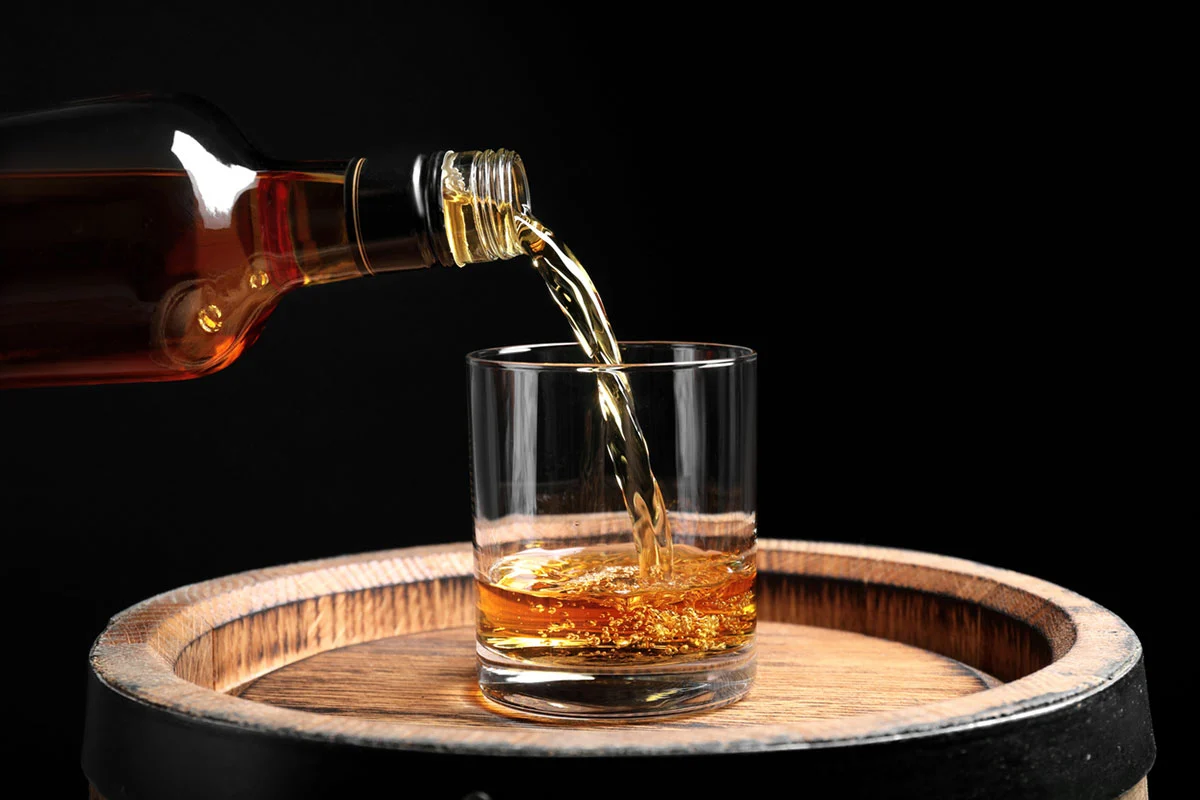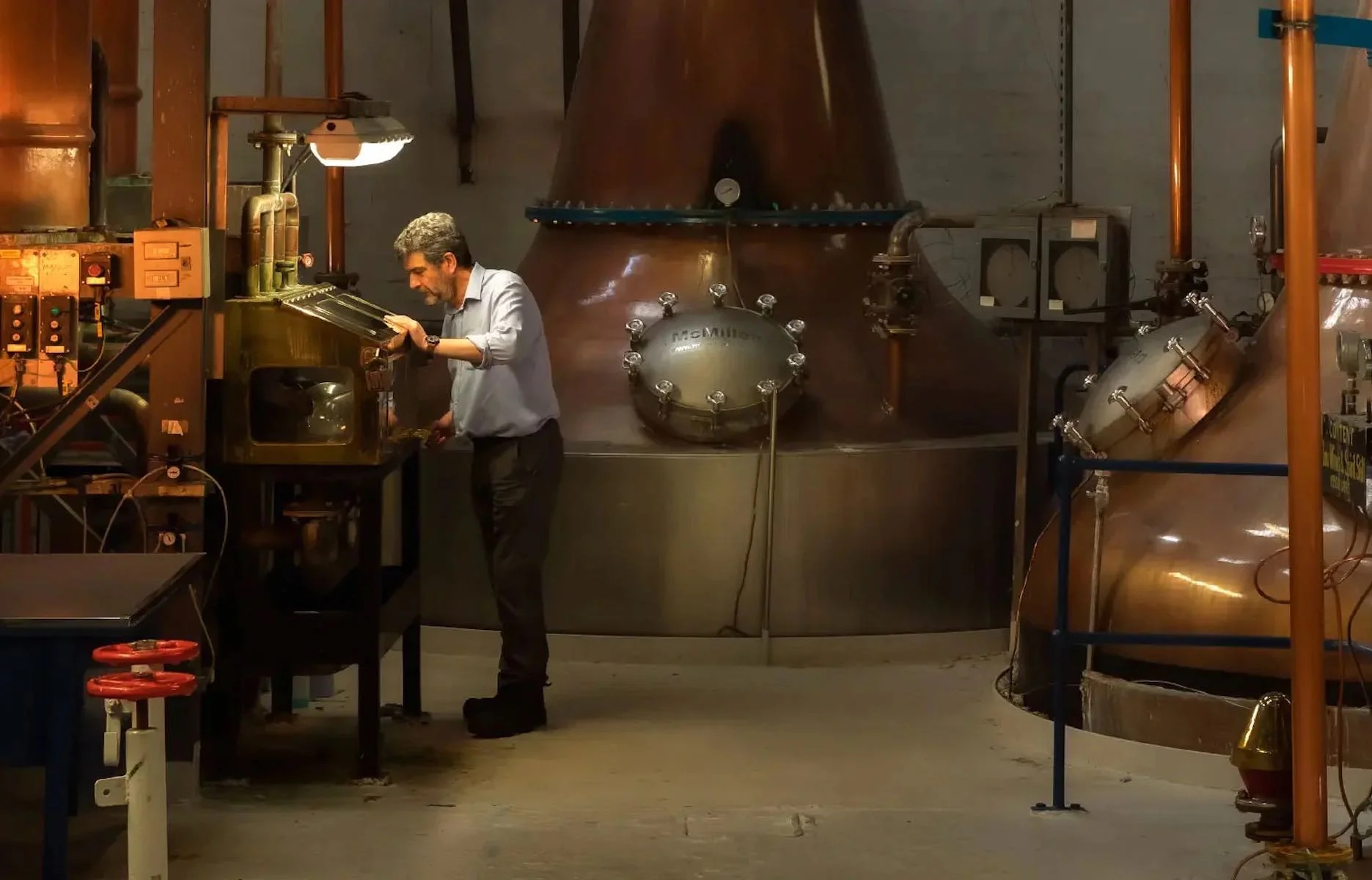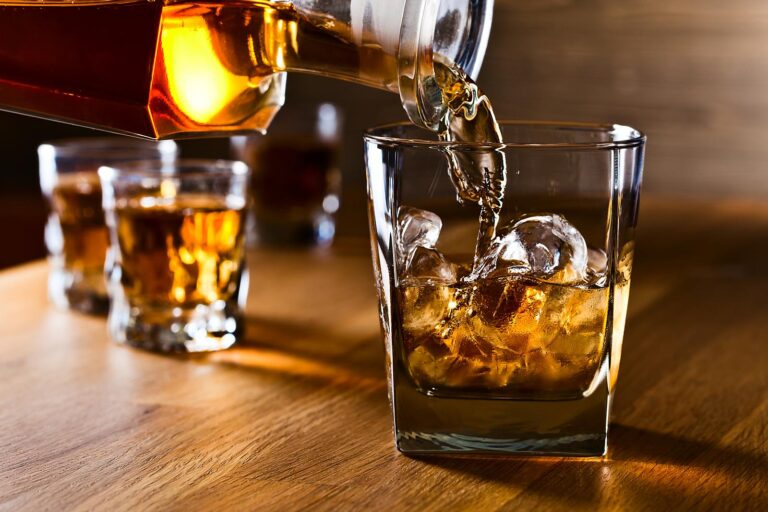There’s something undeniably mysterious about a bottle of whisky that makes you stop, sniff, and savor. Is it the smoky aroma? The smooth finish? Or the fact that you’re suddenly reminded of that one road trip where you wore cowboy boots and thought you looked cool?
The secret lies in the process—a delicate mix of aging and distilling techniques. Let’s break it down.
Key Points
- Aging affects flavor more than you think.
- Barrel material plays a major role.
- Distillation methods vary widely.
- The environment changes everything.
- Science is cool (and so is whisky).
It All Starts with the Barrel
Barrels do more than hold liquid—they’re flavor factories. The wood breathes, infusing the spirit with subtle notes of caramel, vanilla, or even spices, depending on the char level. American oak is a popular choice because it’s durable and imparts a sweet, smoky profile. French oak, on the other hand, adds an elegant, tannic character. Each type of wood creates a unique experience.
The aging environment also matters. Distilleries in Scotland benefit from a cooler, humid climate, which slows evaporation and allows for gradual flavor development. Compare that to a hotter climate, and the difference becomes clear. A bottle aged in Kentucky will mature faster, packing bold flavors in a shorter time.
For those interested in exploring the art of aging, Dec Papi is an excellent resource for insights into the intricate balance of fine drinking and modern living.

The Role of Distilling
Distilling is where the magic happens. It’s not just about boiling and cooling—it’s an art form. The shape and size of the stills influence the flavor. Taller stills allow for lighter, fruitier spirits. Shorter ones create richer, heavier notes.
Take single malt, for example. Distillers often go for copper pot stills, which remove impurities and add a hint of sophistication. Contrast that with column stills used for grain-based spirits. They’re more efficient but can sometimes strip away character.
Why Does Aging Matter?
Time mellows the liquid. Young spirits often taste harsh due to the alcohol content. Over time, interaction with the barrel smooths the edges, adding layers of complexity. Think of it like breaking into a leather jacket. At first, it’s stiff and awkward. But give it time, and it molds into something that fits perfectly.
The barrel breathes with the seasons, absorbing heat in summer and contracting in winter. This movement draws the liquid into the wood, extracting flavors.
How the Environment Shapes Flavor
Location plays a huge role. Coastal distilleries produce spirits with a briny tang, thanks to the salty sea air. Inland locations might lean toward earthy, peaty notes. The water source also adds unique character.
For example:
- Soft water creates a clean, crisp profile.
- Hard water adds minerality and depth.
- Spring water, often filtered through rocks, provides subtle nuances.
Innovative Techniques in the Whisky World

Modern technology is reshaping traditional methods. Some distilleries experiment with rapid aging techniques using ultrasound or pressure chambers. Others use AI to predict how flavors will evolve. Purists might scoff, but there’s no denying the innovation happening in the industry.
Barrel finishing is another game-changer. Some distilleries age their product in one type of barrel and then transfer it to another for a final flourish. A sherry cask finish can add dried fruit and nutty flavors, while a port cask might bring out sweeter notes.
How to Tell If a Whisky Will Taste Good
The label holds clues:
- Age statement ─ Older doesn’t always mean better, but it’s a good start.
- Cask strength ─ Higher proof often means bolder flavors.
- Region ─ Different areas have distinct profiles (Islay = smoky, Speyside = fruity).
A Traveler’s Tips for Choosing Whisky
When you’re on the road, exploring a local distillery is a must. Here are five quick tips:
- Ask the locals—they know the hidden gems.
- Don’t judge by price. Some budget options are fantastic.
- Try before you buy. Tastings are your best friend.
- Look for limited editions—they’re often unique.
- Experiment. The adventure is in the variety.
The Secret of Char Levels
The inside of every barrel is charred to bring out specific flavors. This isn’t just for show—it’s a science. Charring caramelizes the natural sugars in the wood, creating compounds that enhance sweetness and depth. The level of char, from light to heavy, affects the balance of flavors. A lighter char might bring out floral or fruity notes, while a heavier one introduces smoky, bold characteristics.
Char levels also influence how much the spirit interacts with the wood. Deeper charring opens up the grain, allowing for greater absorption of tannins and lignins. These compounds break down over time, creating a complex mix of vanilla, spice, and toasted oak. The longer the aging process, the more pronounced the effects of the char.
Why Peat Matters

Peat often divides opinions. Love it or hate it, peat adds a distinctive earthy and smoky note. Found in abundance in Scotland, peat is a partially decomposed plant material used to fuel the malting process. When burned, it releases phenols, which seep into the malt and stay throughout the distillation and aging process.
The level of peat can range from subtle to overwhelming. Distilleries like those on Islay are famous for their peaty profiles, with intense flavors that transport you to windswept coasts. For beginners, lightly peated options offer a gentler introduction. Peat isn’t just a flavor—it’s a link to tradition and terroir, giving every sip a sense of place.
FAQs
1. Why does the barrel matter so much?
Barrels add flavor, color, and depth by interacting with the liquid over time.
2. Can climate really change the taste?
Yes. Hotter climates speed up aging, leading to bolder flavors, while cooler ones develop smoother profiles.
3. What’s the difference between pot stills and column stills?
Pot stills create rich, complex spirits. Column stills are more efficient but sometimes less flavorful.
4. Does water source impact flavor?
Absolutely. Mineral content and purity can influence the final profile.
5. Is modern technology ruining tradition?
Not at all. It’s enhancing options, though purists may prefer sticking to old-school methods.
A good bottle tells a story. The next time you pour a dram, think about the journey it’s been through. Aging, distilling, and even the environment all play a part. And if you’re lucky, it might remind you of those cowboy boots—cool, in their own unique way.
Related Posts:
- 13 Professional Bike Water Bottle Holder 2024 - Top…
- 20 Best Gaming Headset Under 50$ 2024 - for PC, PS4,…
- 10 Best Coffee For Cold Brew 2024 - Top Quality Brands
- Top 10 Best Paint Sprayer For Cabinets 2024 -…
- 12 Best Car Wax For Black Cars 2024 - Protection and…
- 15 Best Shoes for Walking on Concrete 2024 - Soft &…







